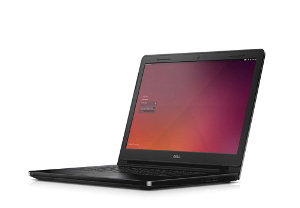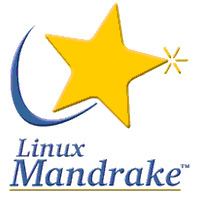Day one of this year’s SouthEast LinuxFest (SELF) was kind of slow, without the bone crushing crowds I expect to see at an open source conference. However, talking with the go-to person at SELF, Jeremy Sands, I understand that this is normal for this conference. It seems that Charlotte is a city with a strong work ethic, keeping the crowd away until the weekend. Still, nearly five hundred in attendance isn’t deserving of sneers — especially on a “slow” day.
 Somehow I managed to get up on time to make the hour and a half trip from my house to the Charlotte area in plenty of time for the 9 A.M. opening, groggy from only getting about three hours sleep, then wondered why I bothered arriving early. After all, the first presentation I planned to attend wasn’t until 11:30, and with no keynote address scheduled for Friday morning, that left me with a lot of time on my hands.
Somehow I managed to get up on time to make the hour and a half trip from my house to the Charlotte area in plenty of time for the 9 A.M. opening, groggy from only getting about three hours sleep, then wondered why I bothered arriving early. After all, the first presentation I planned to attend wasn’t until 11:30, and with no keynote address scheduled for Friday morning, that left me with a lot of time on my hands.
Christine Hall has been a journalist since 1971. In 2001, she began writing a weekly consumer computer column and started covering Linux and FOSS in 2002 after making the switch to GNU/Linux. Follow her on Twitter: @BrideOfLinux



 While there have been no injury reports yet from the multitudes simultaneously jumping on the
While there have been no injury reports yet from the multitudes simultaneously jumping on the 


 At the height of the media frenzy that developed around Snowden’s initial revelations, there were allegations that Microsoft had not only built back doors in its software for the NSA and other government agencies to use against foreign businesses and governments, but that it was cooperating with U.S. authorities in other ways as well. For example, one report indicated that the company was passing along details of unpatched security vulnerabilities in Windows to the NSA, effectively adding temporary tools to the spy agency’s cyber arsenal.
At the height of the media frenzy that developed around Snowden’s initial revelations, there were allegations that Microsoft had not only built back doors in its software for the NSA and other government agencies to use against foreign businesses and governments, but that it was cooperating with U.S. authorities in other ways as well. For example, one report indicated that the company was passing along details of unpatched security vulnerabilities in Windows to the NSA, effectively adding temporary tools to the spy agency’s cyber arsenal.


 I’ve spent a good deal of time, as well, kicking this around with my partner-in-ink Larry Cafiero. And some of the things I’ve taken away were not gotten face-to-face: Folks like Steven Vaughan-Nichols and Matt Hartley have discussed it through their preferred media in one way or another.
I’ve spent a good deal of time, as well, kicking this around with my partner-in-ink Larry Cafiero. And some of the things I’ve taken away were not gotten face-to-face: Folks like Steven Vaughan-Nichols and Matt Hartley have discussed it through their preferred media in one way or another.

 Mandriva S.A., the French company behind Mandriva, the distribution that long time Linux users will remember as Mandrake, died this week at the age of sixteen. The announcement came in the form of a
Mandriva S.A., the French company behind Mandriva, the distribution that long time Linux users will remember as Mandrake, died this week at the age of sixteen. The announcement came in the form of a 
 Quite simply, most of us use desktop Linux because it’s superior to all other brands, including Windows and OS X — even including Unix and the BSDs. This is a fact, not an opinion. There are reasons why Linux runs a majority of the world’s servers and powers most big enterprises, and in an example of where the trickle down theory actually works, those reasons trickle down (or up — depending on your viewpoint) to the desktop.
Quite simply, most of us use desktop Linux because it’s superior to all other brands, including Windows and OS X — even including Unix and the BSDs. This is a fact, not an opinion. There are reasons why Linux runs a majority of the world’s servers and powers most big enterprises, and in an example of where the trickle down theory actually works, those reasons trickle down (or up — depending on your viewpoint) to the desktop.
 Since the introduction of Fedora.next — the umbrella program for the roadmap for the distro going forward — the distro comes in three basic flavors: Workstation, Server and Cloud. Workstation is the desktop/laptop version — and workstation version for businesses. Cloud and Server are pretty self-explanatory.
Since the introduction of Fedora.next — the umbrella program for the roadmap for the distro going forward — the distro comes in three basic flavors: Workstation, Server and Cloud. Workstation is the desktop/laptop version — and workstation version for businesses. Cloud and Server are pretty self-explanatory.